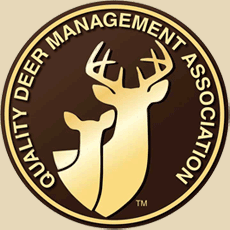Top 10 Things Hunters should know
Items 5-6
Last installment covered the top two things all hunters should know regardless of the game pursued. This installment will cover items 5-6; How to scout properly, and Know your quarry
Part 5: How to Scout Properly
For many hunters, (me included) scouting is as much fun if not more than actually hunting. It’s the beginning of the puzzle. It’s the skill that brings the rest of the hunt together. For many trophy hunters, scouting is where it all begins. As one wise hunter put it, “if I have five days to hunt a location. I am going to spend three days scouting and two days hunting.” Scouting and scouting well, will make the last two days a lot more productive. Using this adage, trophy deer hunters in particular need to spend three days scouting for every two days hunting. Simply put, we have to put in the boot leather to be more successful.
Scouting properly begins however at our computer or kitchen table. With today’s technology available we need to begin with good aerial photos and topographical maps of our properties to begin our scouting regimen. (USGS, My Topo) Google Earth) are all good places to start. By using the topographical data in conjunction with aerial photos we can quickly narrow down the most likely places deer will be and concentrate our foot scouting to these areas. What to look for? When deer scouting, the first things I look for are the obvious sign. Trails, old rubs, old scrapes, something that lets me know a buck is in the area. Secondly, are food sources, – early season food sources, late season food sources and travel routes to these food sources.
Next I will look for bedding areas. If I am not familiar with a particular property I need to know the bedding area in conjunction with the food. Finding these will result in travel routes between the two. Last I look for water. A good source of water will also congregate bucks in a particular area. Finding good food such as white oaks and other mast baring trees is a great sign, but it is often not enough. Now that we found the obvious sign we have to look closer. Find the oak trees closest to the bedding areas, these will be visited first by bucks. Setting up along these areas will produce. Last I look for funnels, edges, hard edges and soft edges, Walking these edges will highlight trails paralleling, saddles along ridges, and stream crossings are all great places to begin. Often, I will follow these trails for a few hundred yards in each direction to learn where the deer are coming from and traveling to.
Combining these technology tools with good ole boot leather will produce more and more bucks in your sights.
But scouting is not only a deer hunters tool. Waterfowl hunters have long known that scouting will put more birds in your bag. Watching where the geese and ducks roost and feed will make setting the blind easier. If you are hunting flooded fields, then monitoring the approach will put more ducks in range.
Turkey hunters also know scouting is a key to success. Locating feeding areas, fields and roosting sights will definitely put more gobblers in your sights.
Part 6: Know your Quarry
This is the perfect Segway from the previous tip. Knowing your quarry, their anatomy, their habits, feeding methods, breeding seasons all help to know and figure out the best methods of approach. There are some simple methods to learning this, 1. Reading everything you can find on your chosen species. There are hundreds of books available that will tell you almost everything you want to learn about deer, turkeys, quail, ducks etc. 2. Talk to other hunters. Nothing gets my blood pumping like sitting down with a respected hunter and picking their brain. Finding mentor is better. We all know there is more to learn about our chosen passion. Hunting is a lifetime of knowledge. The more we can grasp from our more seasoned hunters, the shorter the learning curve for us. And lastly, spend time in the fields and woods. Nothing will teach you more about your quarry than hunting them.
Some say ducks fly better in bad weather, others prefer blue bird days, spending time in a blind in miserable conditions or cold clear morning will teach you that actually they may like both. Coyotes will respond to a lot of different sounds, sending time hunting them at different times of year will show you that this call works better in February, and that one is better in August. Deer don’t move on cold fronts, but I have killed several in low pressure cold fronts. In short, understanding your quarry will put more of them on your table.
Again, nothing beats being out there and letting them teach you all about themselves. A good hunter is one who pays attention in class. When the animals themselves are instructing us about their mannerisms we need to pay close attention.




